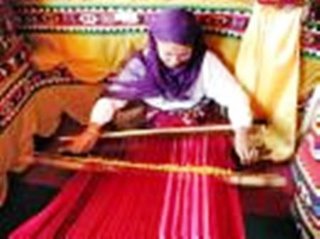Lanao del Norte
Overview
The Provincial Government of Lanao del Norte, “Land of Beauty and Bounty,” has been exerting its best effort to uplift the quality of life of the people in the rural and urban areas in the province through the promotion of Integrated Agriculture and Economics Tourism Development Programs.
The primary goal of the development plans is to create conditions that will facilitate and accelerate economic word of the province. One of the conditions identified is to promote the tourism industry that would act as a catalyst for the development of trade and other economic interactions between outlying municipalities in the province and its neighboring provinces as well.
Geography
The province of Lanao del Norte is located in the Northern Mindanao Area along the North western Coast. Three known fishing grounds bound ten of its 22 Municipalities, namely: Iligan Bay, Panguil Bay, and Illana Bay.
The province is bounded by the provinces of Maguindanao and Cotabato on the North, South Cotabato on the South; Davao del Sur on the East and Celebes Sea on the west.
Land Area: 355,636 sq. kms.
Topography
The province is traversed by several rivers, the most important of which is the Agus River which feeds the Ma. Cristina Falls, a major source of hydroelectric power for the Mindanao Grid.
Generally ranges are plain and surrounded by high mountain ranges from all directions.
Political Subdivisions
The province is comprised of 22 municipalities, namely: Bacolod, Balo-i, Baroy, Kapatagan, Kauswagan, Lala, Linamon, Magsaysay, Maigo, Matungao, Munai, Nunungan, Pantao Ragat, Pantar, Poona Piagapo, Salvador, Sapad, Sultan Naga Dimaporo (Karomatan), Tagoloan, Tangkal, and Tubod. It has 462 barangays. The municipality of Tubod is the capital town of the province. It has 2 Districts, (1st) Iligan City to the Municipality of Baroy and (2nd ) from Municipality of Balo-I to Sapad.
Population
Has a population of 387,324 with a population density of 109.00 per square kilometers. Language / Dialect
Language / Dialect
The Christian-Muslim ratio is 60:40 in favor of the Christians. Cebuano, English & Filipino are widely spoken among Christians, and Maranao for Muslim.
Climate
Lanao del Norte is outside the typhoon belt and has a non-seasonal climate with an average yearly rainfall of 60 inches. The average temperature is 80 degrees on the Fahrenheit scale.
Industries
Rice, corn, coconut, marine products (crabs, shrimps, sea shells, sea woods), and wood products.
A. Products
· Seaweeds
B. Key players
· 1 association with 246 members
C. Market
· Domestic
D. Trade and investment opportunities
· Appropriate trainings and exposures
· Establish production support facilities
· Establish data bank system for easy access to information such as market trends (application of ICT)
· Establish mechanism for project monitoring
· Advocate, formulate and implement policies for seaweeds
History
The term Lanao is derived from the Maranao word “Ranao” meaning a body of water. “Maranao” means lake dweller. They are the natives of the place occupying the land around Lake Lanao, which is situated at the central part of Lanao del Sur. Lanao applied to the entire area before its division.
When it was divided into two provinces, the southern portion became Lanao del Sur and the northern part became Lanao del Norte.
The Maranaos are a tribe of Malay-Arabic descent. They settled in the area long before the advent of the Spaniards in the Philippines. They possess their own culture and civilization which makes them quite unique. Their language, customs, traditions, religion, social system, costumes, music, and other features are factors that make Lanao peculiar and distinct from other Philippine provinces. (maranao, wowphilippines & DTI)
No comments:
Post a Comment